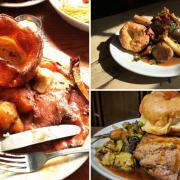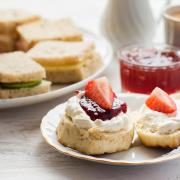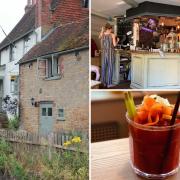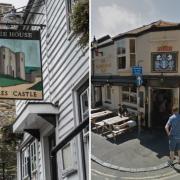Goodwood has long been associated with fast cars and horse-racing. But now a triumvirate of experts are bringing the farm to the forefront with a brand new restaurant, as Duncan Hall finds out
The name says it all: Farmer, Butcher, Chef. The Goodwood Estate’s former 18th century Richmond Arms is being completely reimagined as a restaurant and bar separate from the neighbouring hotel with food provenance at its heart. Up to 95 per cent of the menu at multi-Michelin Star-winning executive chef Darron Bunn’s new restaurant will come from the estate’s Home Farm, which has been run by general manager Tim Hassell for the last eight years. And all the meat will have gone through the careful hands of in-house master butcher John Hearn.
The food revolution at Goodwood arguably began in 2008 with Tim’s arrival. “When I started Home Farm was a small wholesale business selling a small amount of milk and some beer,” he says. “My remit from Lord March was to add value to everything we produced.”
And it worked. From the 40kg of produce the farm produced every week when Tim arrived, it now sends more than 15,000kg of meat, milk, cheese and beer to sell on the estate and beyond. The money made from the farm has gone from £200,000 eight years ago to £1.8m a year as Tim oversaw the rebranding of what came out of the farm. Last year Tim won the Farmer’s Weekly Farm Manager of the Year Award.
The creation of an in-house butchery in the former farm shop four years ago has added a slew of national Great Taste Awards to the tally. The estate won one gold star for their sausages, two gold stars for their topside of beef and their three gold star-winning organic pork belly was named one of Britain’s top 50 foods at this year’s ceremony. The four-strong butchery team led by John is now working closely with the chefs for the offerings at the new restaurant which opens on Thursday 24 November. And it was in one of their planning meetings creating the first draft of Farmer, Butcher, Chef’s menu that Darron believes the concept started to gel.
“Our head chef Matt Vidal was going through the menu explaining the dishes,” says Darron. “He got to a dish of ale-glazed ox cheek, but John said you couldn’t do it. With Tim supplying three cows a week we would only get six ox cheeks. Instead he recommended another cut at the front of the shin of beef which could be used in the same way and would supply 90 cuts. That for me was when the restaurant came together.” The chefs will be using unusual cuts of meat from the estate’s animals for a true nose-to-tail approach – for example for its steak tartare dish they won’t use sirloin or fillet cuts but the lesser-known bavette steak. There have even been discussions about introducing a “meat sommelier” to give advice to customers about different cuts.
Perhaps the dish which sums up the collaboration best is what Darron thinks might become a signature item: the Butcher’s Board. “The whole story of the restaurant will be on that platter,” says Darron, adding there will also be between six and seven starter, main course and dessert options for a traditional three-course meal. Patrons of the adjoining bar can enjoy a tasting selection of Farm Teasers featuring some of the meat cuts explored on the main menu, alongside a selection of charcuterie.
All the menu dishes at the 90-cover restaurant will be accompanied by seasonal vegetables, many from the Estate’s 3,400-acre organic farm. Items sourced from outside the estate will include fish, seafood, poultry and eggs, as Home Farm doesn’t currently raise chickens or turkeys – although there are plans to introduce them. “We can support local businesses and vineyards,” says Darron. “There are quite a few English wines on our list. We are aiming to produce zero waste as much as we can. As the farm can deliver six days a week we will be taking stock little and often. Lots of little initiatives, such as composting, will start with Farmer, Butcher, Chef.”
Indeed the plans for the restaurant have even reached the attention of the Royal Academy of Culinary Arts, which is planning to use Farmer, Butcher, Chef as their yardstick for an industry standard in sustainable food philosophy. “Farmer, Butcher, Chef will be the first restaurant to get this seal of approval when they roll it out,” says Darron.
Such a focus on provenance and sustainability might seem daunting, but the plan is that Farmer, Butcher, Chef will be a neighbourhood restaurant rather than a Michelin Star-chasing home of fine dining. “We don’t want it to be a stuffy environment,” says Darron. “Our staff are going to be really key to that – we are working hard to find those stars. We want people to come away saying: ‘Wow! That was bloody good’.”



























